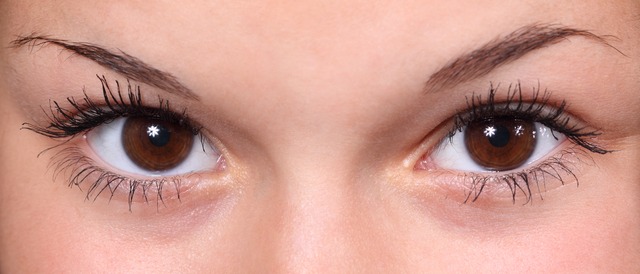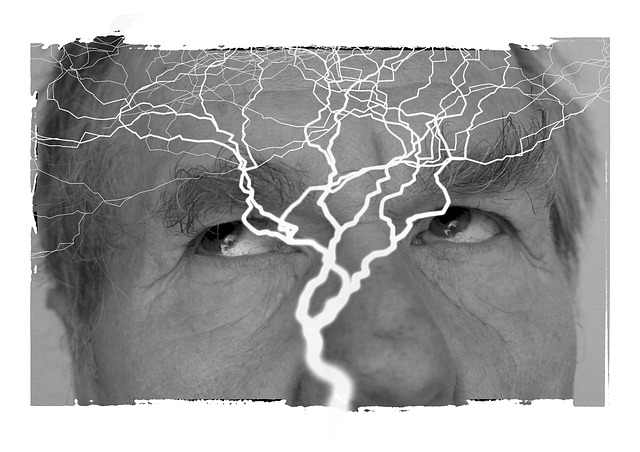The Wonder Drug: Medical and Health Benefits of Marijuana
1 Comment
“What, if any, are the medical and health benefits of marijuana?”
It’s a frequently asked question, and rightfully so.
23 states and the District of Columbia have legalized the use of medical marijuana. Spurred on by the increasing information made available from research studies and trials from around the globe, many ‘experts’ are beginning to see cannabis for what it is:
- A potent medicinal drug with the potential to improve overall quality of life; and
- Medicine with limited-to-no side effects (consider all of those pharmaceutical TV advertisements and their list of side-effects a mile long, like Belviq could soon become a thing of the past).
There’s a reason medical marijuana has come to the forefront of America’s attention in recent years. It’s quite literally a miracle plant, a natural ‘wonder drug,’ And for millions, it is a literal life-saver, providing countless health benefits and treatments for ailments. But it isn’t for everyone, and with all the noise surrounding the plant, it can sometimes be difficult to comprehend what the actual health benefits of cannabis are, and how to determine if it’s the right medication for you.
Here you’ll learn about ten ways medicinal cannabis can benefit you and your health.
What you'll learn in this post:
[Click any of the section titles below to jump there]
- Cannabis 101
- Cannabis Can Protect Your Vision
- Cannabis Provides Relief for Cancer & AIDS Patients
- Cannabis for Pain Relief
- Cannabis Decreases Anxiety, Combats PTSD
- Cannabis Counteracts Autoimmune Disorders like Lupus & Rheumatoid Arthritis
- Cannabis Helps Manage Epilepsy & Other Seizure Disorders
- Cannabis Slows Progression of Alzheimer's
- Cannabis Benefits Cancer Treatment
- Cannabis Lessons Side: Effects in Hepatitis C Treatments, Increases Overall Treatment Effectiveness
- Cannabis Calms Parkinson’s Tremors
- Conclusion
Cannabis 101
To start on the right foot, let’s cover some of the basics, or Cannabis 101 as I call it.
What is it? Cannabis is the scientific name for a “tall plant with a stiff upright stem, divided serrated leaves, and glandular hairs,” called the for the marijuana plant.
The cannabis plant produces several naturally occurring compounds called cannabinoids, which react with the human body in different ways. The most famous of these cannabinoids is the delta-9-tetrahydrocannabinoid, commonly dubbed “THC.” It’s the psychoactive cannabinoid that gives you that notable “high” feeling when smoked, ingested, vaporized, or applied (sublingually or topically).
In recent years, another cannabinoid called cannabidiol, or “CBD” has become the focal point of significant scientific research. Numerous studies have shown that CBD has medicinal value without the psychoactive characteristics of THC. In other words, it has specific, medical benefits and applications and won’t get you high.
There are several other compounds found in the cannabis plant, but these are still little understood. Hopefully with the reclassification of cannabis (down from its current Schedule I drug ranking), we’ll see increased funding for medical research of cannabis.
For now, as far as science and medicine are concerned, the entire value of cannabis is extracted from its THC and CBD compounds. What’s noteworthy is that the method by which these compounds are delivered to the body hasn’t been a focal point of scientific research. In fact, scientists tend to conduct studies with cannabinoids that have been extracted from the plant or synthesized in a lab. That means there’s little information available as to whether the effects of THC & CBD differ when applied via new cannabis forms like concentrates, waxes and hash. This also poses the question of whether cannabis maintains the same health benefits to users when consumed in different forms.
And that’s important to bear in mind when comparing scientific studies to the experience of the typical user.
Now that you’ve mastered the basics of cannabis let’s explore what else it can do.
Cannabis Can Protect Your Vision
Whether you know someone personally or just watched Zach Galifianakis & Robert Downey Jr. in the film, Due Date, you’re likely aware that cannabis has been shown to improve the lives of glaucoma patients.
Glaucoma is actually a group of eye diseases that cause abnormally high pressure in they eye, damaging the optic nerve, causing significant pain. It’s one of the leading causes of blindness in the U.S., can occur at any age (but is most common in adults), offers no warning signs, and causes irreversible vision loss.
The good news is that medical marijuana eases the symptoms of glaucoma, by reducing stress on the optic nerve. In fact, glaucoma was the first condition to be approved for treatment with marijuana, since cannabis prohibition in the 1930’s.
“No adverse effects from the smoking of marijuana have been demonstrated.” Federal Judge James Washington, 1976
Fast forward to the 1970’s, when a man named Robert C. Randall sued the government for the right to treat his glaucoma with marijuana. In 1976, federal Judge James Washington ruled for Randall. He found that “while blindness was shown by competent medical testimony to be the otherwise inevitable result of the defendant’s disease, no adverse effects from the smoking of marijuana have been demonstrated.”
Since then, other, less controversial, treatments have become available, leading the American Glaucoma Society to remove THC from its list of approved treatments. But that doesn’t change the undeniable impact Randall’s case has had in the fight for medical marijuana use.
Cannabis Provides Relief for Cannabis & AIDS Patients

The most widely recognized benefit of cannabis for medical use (and the only one currently accepted by the Food and Drug Administration) is its effectiveness in relieving nausea and loss of appetite. Both conditions are common side-effects experienced by cancer patients undergoing chemotherapy, and as well as AIDs patients experiencing its associative “wasting syndrome.”
Researchers found that THC was undeniably effective in reducing nausea and increasing appetite in clinical trials. They also figured out a way to synthesize THC in a lab, thereby avoiding cannabis plant restrictions imposed by the federal government.
Synthetic THC is currently available under the brand names Marinol and Cesamet. Dr. Douglas Throckmorton, Deputy Director of the Center for Drug Evaluation and Research (CDER) at the Food and Drug Administration, testified before the U.S. House of Representatives that “These products have undergone FDA’s rigorous approval process and have been determined to be safe and effective for their respective indications.”
The U.S. government cites the availability of synthetic THC as a key reason for their opposition of widespread medical marijuana legalization. By that standard, the availability of synthetic THC should immediately call for the reclassification of cannabis from it’s current status as a Schedule I drug, which effectively claims that there are zero medical benefits of marijuana. But alas, hypocrisy is rampant this day in age.
What the government fails to recognize is the vast accumulation of anecdotal evidence by many cancer and AIDS patients showing synthetic THC is inferior, and unpleasant, when compared to other consumption methods — like smoking the plant itself, which means these patients might not be receiving the full effects and benefits of cannabis.
In fact, it was the great outcry from those same cancer and AIDS patients, seeking relief from their symptoms, which supplied the biggest push for the medical marijuana movement in California. That drive resulted in the first compassionate use law in the U.S., enacted by California voters in 1996.
Cannabis for Pain Relief
Did you know that if someone say they’re “feeling no pain” when using marijuana, studies are suggesting that what they’re saying is literally true? THC and CBD are being closely studied to examine their effectiveness in treating chronic pain. The hope is that these studies will validate the existing anecdotal evidence: that THC, CBD, or similar cannabis compounds are more effective than current opioid pain medications for a variety of conditions including arthritis, diabetic neuropathy, muscular sclerosis, cancer and other neurological conditions.
And even if the cannabinoids are found only to be equally as effective as existing pharmaceuticals, it would still be a landslide victory. Why? Because cannabis doesn’t come with the scary list of nasty side effects that opioids carry. The benefits of marijuana far outweigh any associated side effects, which are very limited and minor in nature.
One case study gave the following insight into the effectiveness of THC vs. CBD in treating his pain.
The patient, a chronic pain sufferer, who regularly uses medical marijuana to alleviate his daily struggles with chronic pain said that the pain (due to arthritis and a rare degenerative condition in the spine) can render him relatively immobile on certain days.
Initially, the patient experimented with virtually every type of cannabis consumption I’ve ever heard of: smoking flower, vaporizing flower, dabbing concentrates, vaporizing concentrates, ingesting edibles, drinking THC-infused beverages (like Sprig soda), applying topical rubs and ointments, etc. to little or no success.
He stated that he had found relief in certain high-THC and high-CBD strains like Blackberry Kush and ACDC (strains high in both THC & CBD tend to make the best pain medicines), but that it wasn’t until trying high-CBD products in the form of sublingual drops that he found his real medicine.
Based on personal experience, the patient advised that sublingual drops were preferred as they don’t imbue users with the typical “high” or “baked” feeling. He, instead, noticed significant pain relief without the psychoactive effects. He reported feeling more comfortable in daily activities, remarking that that the drops had the additional benefit of reducing his smoking consumption to nearly half.
Cannabis Decreases Anxiety, Combats PTSD

A 2010 study by Harvard Medical found that in small doses cannabis reduced anxiety, improving the user’s overall mood and providing a generalized sedative effect, similar to over the counter medications but without the side effects.
It has been approved for treatment of Post Traumatic Stress Disorder, or PTSD across the country, and in New Mexico is the primary reason patients get a license for medical marijuana use.
And the Department of Health and Human Services even signed off on a government proposal aimed at further study into the benefits of marijuana for veterans living with PTSD – the only time the U.S. government has every authorized a proposal that includes either vaporized or smoked marijuana – a classified drug with no “accepted” medical applications!
Naturally occurring cannabinoids, similar to THC, assist the body in controlling the system that causes anxiety and fear in both the brain and the body.
John, a two-tour veteran of the Iraq conflict “swears by it,” as treatment. “It gives me relief from the anxiety but doesn’t leave me fuzzy-minded.” Adding that it, “helps me sleep with no nightmares.”
Because marijuana disrupts the typical sleep cycle by interrupting some of the later stages of REM sleep — the dream state — many sufferers of PTSD find relief from night-time terrors when using cannabis. When REM state is disrupted, the nightmares often are as well, aiding veterans in achieving restorative sleep.
Cannabis Counteracts Autoimmune Disorders like Lupus & Rheumatoid Arthitis
Lupus, the common name for Systemic Lupus Erythematosus, is an autoimmune disease characterized by swelling and inflammation of joints in the body, kidney, lung, and heart damage, among other symptoms. With autoimmune diseases such as Lupus, and Rheumatoid Arthritis, the body’s immune system becomes hyperactive and attacks the healthy tissues in the body.
In 2014 the Journal of Biological Chemistry published research that illustrated how THC can “suppress the body’s immune functions,” and that’s good news for people living with autoimmune diseases like Lupus.
Additional benefits of cannabis use like relief of associated nausea and body pain, make it a desired choice among some patients.
Emma V., a recently diagnosed Lupus patient in the UK, said that cannabis “was really the only choice.” Adding, “I can take one drug [cannabis] and get relief from multiple symptoms and feel well enough to get on with my day, or I can take a handful of tablets [OTC medications] and be useless.”
Cannabis Helps Manage Epilepsy & Other Seizure Disorders

Approximately 1% of the world’s population suffers from some form of epilepsy. And of those nearly 72 million people (more than twice the population of Canada!) it is estimated that between 20-30% of all individuals with epilepsy are not “adequately controlled with conventional drugs.”
In 2003, a study performed by Virginia Commonwealth University found that “cannabinoids work at controlling seizures.” The cannabinoids activate a protein, commonly known as the CB1 receptor, that is responsible for “controlling excitability and regulating relaxation.”
And it’s not just epilepsy.
Patients suffering the symptoms of Dravet’s Syndrome, a severe disorder that causes seizures and developmental delays, are also finding some relief thanks to cannabis use.
Parents of five-year-old Colorado native Charlotte Figi had found little benefit in conventional medications for treating their daughter’s condition. They did, however, see a drop in the frequency and intensity of her seizures – from 300 per week, to just one approximately every seven days – once they began treating her with CBD, the non-psychoactive cannabinoid.
Cannabis Slows Progression of Alzheimer’s
It doesn’t get much scarier than Alzheimer’s Disease. A debilitating, progressive disease with no known cure, stealing memories and experiences from lives around the world. But that could all be changing. A 2006 study done by Kim Janda, of the Scripps Institute in California, found that THC blocks the accumulation of amyloid plaque, the primary marker for Alzheimer’s, better than anything currently used. It does so by blocking the enzyme that makes the plaques. The plaques kill brain cells, causing Alzheimer’s.
“These findings offer convincing evidence that THC possesses remarkable inhibitory qualities,” said Janda in conversation with MSNBC, “especially when compared to AChE inhibitors currently available to patients.”
More recently, a 2014 study published in the Journal of Alzheimer’s Disease, reported similar findings to support the effectiveness of THC in “prohibiting the growth of toxic amyloid plagues.”
Cannabis Benefits Cancer Treatment
We’ve all heard that cannabis is beneficial for cancer patients. The FDA has approved its use (in the form of Nabilone) when prescribed by a doctor anywhere in the U.S., and tens of thousands of cancer patients already use the medicine for relief from harsh chemotherapy, but what if it did something more? What if cannabis could stop cancer? Recent studies say it very possibly can. The mounting evidence supports the potential for THC actually to prevent the spread of the disease.
Researchers at the San Francisco-based California Pacific Medical Center reported that CBD may help to prevent cancer cells from spreading.
The study focuses on ID-1, the gene that has one job: it causes cancer to spread. Pierre Desprez, one of the scientists responsible for the groundbreaking research has spent ‘decades’ studying the gene. Desprez joined forces with fellow scientist Sean McAllister, who was working with the effects of CBD. The pairing resulted in research that shows, “Cannabidiol could essentially ‘turn off’ the ID-1.”
The American Association for Cancer Research also reports that marijuana can impede tumor growth in lungs, breast and brain cancers.
Cannabis Lessons: Side-Effects in Hepatitis C Treatments, Increases Overall Treatment Effectiveness
The treatment for Hepatitis C, a potentially deadly viral infection affecting nearly 4 million Americans, is long, costly and painful to endure. Consisting of months-long therapy of two heavy hitting pharmaceuticals, ribavirin and interferon – the side effects of which include intense fatigue, severe muscle aches, nausea, depression and loss of appetite – causes many patients actually to stop taking the treatment, despite resulting permanent liver damage.
But a 2006 study, published in the European Journal of Gastroenterology and Hepatology reported that 86% of patients who used cannabis, completed their Hepatitis C therapy when compared to 29% of those who did not use cannabis. The study also reported that the effectiveness of the treatment appeared to be enhanced. They said that 54% of patients who used cannabis kept their viral levels low, compared to only 8% of non-users.

Cannabis Calm Parkinson’s Tremors
Israeli researchers recently discovered the benefits of marijuana on Parkinson’s disease tremors and associated pain.
Ruth Djaldetti, MD, of Tel Aviv University Israel, presented the findings of her report at the International Congress on Parkinson’s Disease and Movement Disorders. She explained how people living with the debilitating disease ranked their disease on a standardized “Unified Parkinson’s Disease Rating Scale.” The UPDRS rating helps medical professionals understand the scope of a patient’s personal difficulties. Before using cannabis, patients reported an average rank of 33. Approximately thirty minutes after using cannabis, these same patients reported a drop to an average rank of 24.
In conversation with Ed Susman of MedPage Today, Dr. Djaldetti said, “We not only saw improvement in tremor in these patients, but also in rigidity and in bradykinesia.” Dr. Djaldetti said she “would recommend use of marijuana to my patients.”
Cannabis has also been reported to be a good sleep aid for many people living with Parkinson’s. But perhaps the most interesting findings were the reports of increased fine motor skills among patients who used cannabis.
Conclusion
The benefits of marijuana are real. With mounting evidence supporting the wide and varied uses of cannabis as a life-enhancing medication, we can only hope it will soon receive the widespread recognition it so readily deserves.
Marijuana and Diabetes: Can the Two Work Together?
2 Comments
In the United States alone more than 30 million people are currently living with diabetes. That’s nearly 10 percent of the entire population. What’s worse is that two out of every three of those 30 million people will die from the disease (or it’s associated complications.)
In this post we’ll explore the intricacies of how marijuana and diabetes interact with one another.
What you'll learn in this post:
[Click any of the section titles below to jump there]
Types of Diabetes
Type 1 Diabetes, also known as “Juvenile Diabetes,” is actually a genetic condition in which the pancreas is incapable of creating sufficient amounts of insulin to meet the body’s needs. As a result, patients with type 1 diabetes often require insulin injections multiple times, every single day of their life.
With type 2 diabetes, more widely known as “Adult Onset,” the body does produce insulin, it just doesn’t produce it properly. And that “improper” insulin production signals the pancreas to produce even more – more than the body needs, or can process. Feast or famine.
With one out of every ten Americans affected, researchers are working hard to help patients better manage the potentially life-threatening disease, which from this perspective means taking a hard look at how marijuana and diabetes engage each other.
The Research
In 2005, the American Alliance for Medical Marijuana released a groundbreaking report detailing five key areas where medical marijuana was believed to benefit people living with diabetes. The AAMC stated that:
- Cannabis was believed capable of stabilizing blood sugar;
- Since cannabis was “neuro-protective” in nature, it was capable of reducing neuropathic pain by activating receptors located in the body and the brain;
- Cannabis helps to keep blood vessels open and plays a key role, over time, in reducing blood pressure;
- Because it acts as an “anti-spasmodic agent” it can relieve the pain and discomfort typically associated with muscle cramps and gastrointestinal upset more easily than its “far more toxic” counterparts, such as Neurotonin; and
- By alleviating the symptoms of restless leg syndrome, an associated condition for many with diabetes, it facilitates better sleep, which in turn helps increase overall body function.
Additionally, the AAMC reported that topical ointments or rubs made with cannabis CBD oil were helpful in reducing symptoms such as neuropathic pain and tingling sensations in the hands and feet.
But the research didn’t stop there.
Since 2005, there have been countless studies done on the benefits of cannabis for people with diabetes, including one done in 2013, and published in the American Journal of Medicine. That study quickly became a cornerstone for discussing the potential of cannabis to help battle the disease.
And while doubt surrounding the drug’s effectiveness for delaying the onset of type 2 diabetes continued to linger, the AJM report left little doubt that marijuana was helpful (and healthful) for those already diagnosed with diabetes – type 1 or type 2; further noting its benefits for patients who experienced associated complications.
The research found that current cannabis users were reported to have a “better” metabolism of carbohydrates when compared to non-users. The study’s author, Associate Professor of Medicine at Harvard Medical School Murray Mittleman, said the key finding in the study was that the fasting insulin levels of cannabis users was not only lower, but also appeared to be “less resistant” to the insulin that their body produced, enabling them to “maintain a normal blood-sugar level.”
Why This Is Such Big News
Because the results of the study apply to patients with both type 1 and type 2 diabetes, it has the potential to change the face of how people live with the disease.
Type 1 patients, for example, may benefit from the lower fasting level with a reduced need for insulin injections. So while it is unlikely that cannabis would ever completely eliminate the need for insulin injections 100%, it could cut the number of injections a patient needs per day in half.
Because type 2 diabetes is more ‘resistant’ to insulin, cannabis has the potential to slow down the advancement of the disease, by helping the body develop its ability to manage sugar levels naturally.
Marijuana and diabetes are not mutually exclusive.
Diabetes Associated Conditions
Both type 1 and type 2 diabetes carry associated conditions and complications that can make life even more challenging. In addition to neuropathy, people with diabetes are often diagnosed with glaucoma, high blood pressure, and peripheral vascular disease.
Neuropathy
Neuropathy (nerve damage) affects between 65 – 70% of all persons with diabetes, typically in one of four areas:
- Peripheral neuropathy: affects feet, legs, hands and arms;
- Autonomic neuropathy: affects the blood-glucose-level controlling nerves and blood pressure;
- Focal neuropathy: affects the head, torso and legs;
- Proximal neuropathy: perhaps the most frightening, is typically ‘one-sided’ and sudden-onset, striking the hips, thighs and buttock.
Multiple studies have concluded that cannabis not only alleviates pain, but arrests the advancement of nerve damage known as neuropathy.
Glaucoma
People with diabetes have an increased risk of developing glaucoma (pressure build-up within the eye, which can result in pain and blindness) by 40% compared to those without the disease. Medical marijuana’s benefits in reducing inflammation for glaucoma sufferers has been well-documented, and is frequently prescribed by physicians for their patients.
Peripheral Vascular Disease
In connection with diabetes, peripheral vascular disease causes a reduction in circulation in the legs. Plaque hardens in the arteries, shrinking the amount of space the blood had to flow through. Cannabis helps the arteries to essentially ‘relax’ allowing increased arterial blood flow.
Studies show that cannabis also has positive effects on angina (severe chest pain caused by insufficient blood flow to the heart). With smoke inhalation being considered the primary reason for reduced doctor recommendations, the evolution of cannabis edible and teas is expected to have a significant impact on reversing the trend.
When you consider that physicians are prescribing synthetic cannabinoids as Cesamet, Marinol and Sativex, you have to wonder how much longer will it be before they get back to the source of the medicine; the heart of the healing.
Testimonials
Before I started taking weed for my diabetes I was miserable, couldn’t do nothing, the pain in my feet was so bad. But now I can down to the store on my own and even go for a walk now and then, if the weather’s nice. Thank God I found a doctor who cared more about me than what people thought. –George H.
It works for me. I was having a brutal time with restless legs. I couldn’t sleep. I was so tired the next day. I couldn’t work. I was on disability. I felt helpless. [Medical marijuana] is the reason I am able to go to work every day. I can help others who can’t and that makes me feel good. –Ranvir R.
Weed? For Diabetes? Are we still even asking that question? –Kerry F.
Get Medical Cannabis Delivered
While we love sharing awesome content on our blog to help cannabis patients better understand the plant they love, we’re also pioneering the way for easy, quick, and professional cannabis delivery.
Nugg lets you find and order delivery online from local cannabis dispensaries in more than 60 California cities, including San Francisco, Los Angeles, and San Diego. Think of it like GrubHub for cannabis. It’s free to use, every order is backed by 24/7 Customer Service, and you can choose from thousands of marijuana products across hundreds of dispensary menus.
Just click the button below to start shopping dispensaries in your area!



